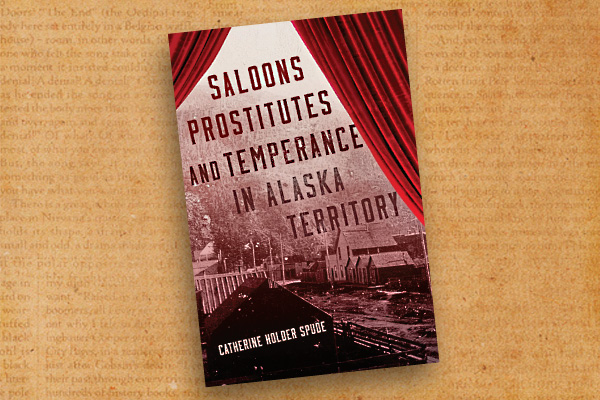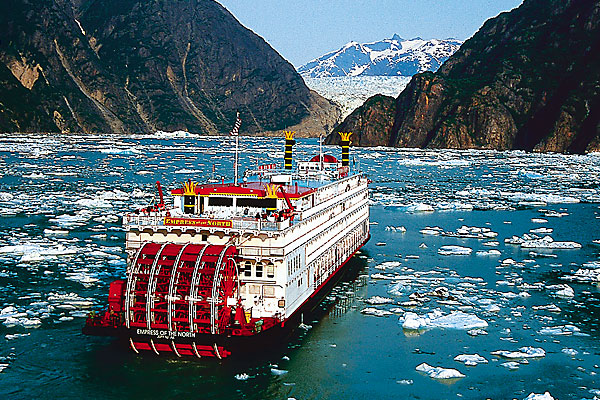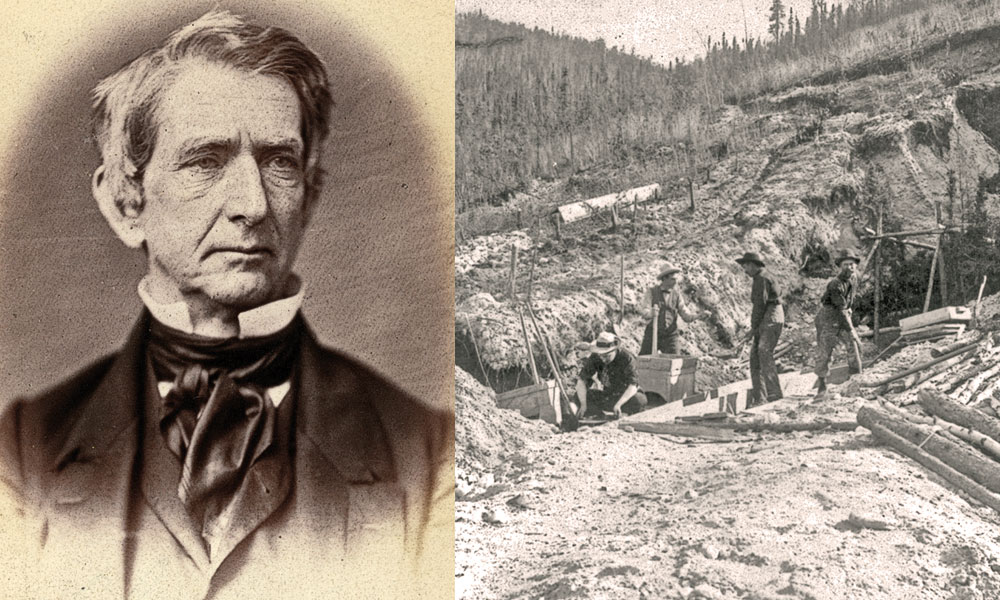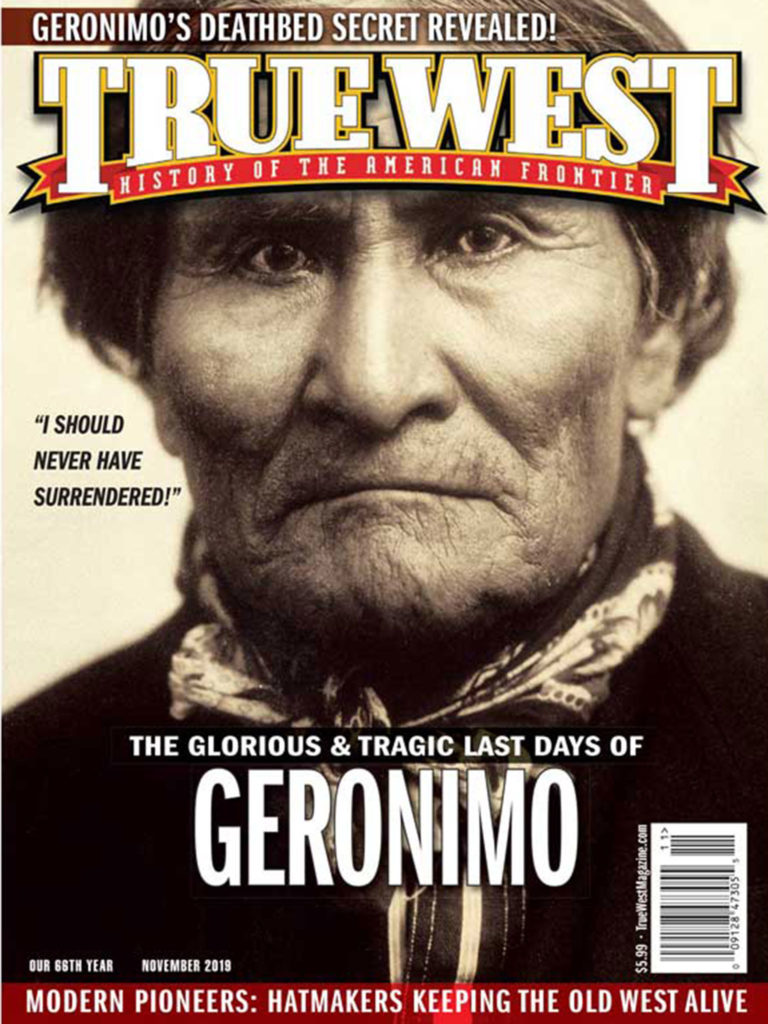
— Courtesy Library of Congress —
It has been 60 years since Alaska became the 49th star on the flag of the United States, but the history of this rugged land, a place called the last frontier, dates back hundreds to thousands of years.
In Sitka, as I walked the trail through the forest to the spot where the local Tlingit tribesmen clashed with Russian interlopers in 1802 and 1804, I met Nancy. She spent her childhood in Sitka and now, in her eighth decade of life, was back enjoying the trails where she’d had secret hiding places from which she’d watched the visitors who’d come to the island.
She told me she had left Sitka for college in Chicago, to study anthropology, but was in Washington, D.C., on Alaska statehood day. “I was at the Washington Monument,” she said. “There were 150,000 people there. More people than in the entire state of Alaska.”

— Courtesy NPS.gov —
The American and Alaskan flags flew first at Sitka, not far from where I met Nancy on the trail. It is here that the territory had its first capital. Sitka is a small city steeped in traditions. On the trails are totem poles representing the long-standing culture of the Tlingit. In the heart of downtown, the Russian Orthodox St. Michael’s Cathedral dominates, in part because the street circles around the building. This is not the original church; that one burned. But it is a true replica and has some of the original relics and ceremonial objects that were saved from the fire.
When America took control of the lands of Alaska from Russia in 1867, the transfer ceremony took place in Sitka on a hill that had been used by Tlingits and later by the Russians. Although the first capital of American Alaska was here, in 1906 the Alaskan seat of government moved to Juneau, which had risen in prominence as a result of the mining industry.
There had been several different governing bodies since the United States purchase. The Army was in command for a decade, followed by the Department of the Treasury and then the U.S. Navy. The Organic Act of 1884 authorized the first governor and promised a civil government, but the area was administered as a federal district until it achieved territorial status in 1912.

— Courtesy Photographs in the Carol M. Highsmith Archive, Library of Congress —
It took almost a century from when the United States acquired Alaska from Russia to the moment when statehood was approved in January 1959.
The capital of Alaska remains in Juneau, a city, like many in southeast Alaska, that has no overland roads connecting it to the outside world. Instead, people arrive by airplane or boat—on the Alaskan Marine Highway ferry system or on cruise ships. While there have been attempts to move the capital because other cities, most notably Anchorage and Fairbanks, are larger and have better transportation connections, that is not likely to happen. Alaskans love their smaller towns and there is a state law on the books that does not allow the moving of the seat of government to a location any closer than 50 miles from either Fairbanks or Anchorage.
Permanent and changing exhibits at the Alaska State Museum in Juneau represent art from all areas of Alaska. The “All Alaska Biennial” exhibit is in place November 1 through January 11. “Women of Vision,” celebrating the 19th Amendment to the U.S. Constitution that granted woman suffrage, opens in 2020 and will include works by women.
HISTORIC WRANGELL
Willy, an octogenarian in Wrangell, one of southeast Alaska’s small coastal communities, spends his afternoons in a softly padded green chair in the lobby of the Stikine Inn. He served in the Army and Air Force, but spent his working days in construction. He remembered Alaska gaining statehood this way: “I didn’t vote for it. Too much government.” That independent spirit resonates with many who call Alaska home.
Wrangell is a town of hardworking people; most have a couple of jobs, and a boat. They might use the boat for their work, or just to get around this country of big water and forested mountains filled with glacial valleys. Like Sitka, Wrangell is a traditional land of the Tlingit, who migrated here many generations ago. The Russians moved in and once Alaska was sold to the United States, Fort Wrangell was established, where the town post office and custom house now stands. Visit the Wrangell Museum and Chief Shakes House or take a jet boat tour up the Stikine. Brenda Schwartz Yeager of Alaska Charters and Adventures offers an adventure that includes stories of homesteading, trapping, river fishing and more.

— HC. Barley, Courtesy Klondike Gold Rush, NHP Museum Collection, NPS.gov —
Gold has been an important mineral in Alaska’s development with three major gold rushes that have direct ties to Wrangell as one of the primary access points to the goldfields. Today the “mining” in the area is done by youth in the community who have the rights to mine for garnets from a ledge up the Stikine River. Visitors buy the precious stones the youths find, an enterprise undertaken by children for generations.
Most miners headed to the Yukon goldfields in the great rush of 1898 cruised to Skagway and then set off over the passes. Most walked or rode horses, but in 1900 the Yukon & White Pass Railroad made the journey to the gold camps much easier. Even today you can cross White River pass by hiking or on the railroad.
Farther north, Fairbanks and Nome also have connections to gold discoveries. Even today gold mining is a key industry; the state produces more gold than any other state except Nevada.
Located in Cook Inlet, Alaska’s largest city was settled in the early 20th century. During an election in 1915 residents adopted the name “Alaska City,” but when the city was incorporated in 1920 the Territorial government rejected that and the community became Anchorage, using an earlier title in the region. With a major airport and as a terminal stop on the Alaska Railroad, Anchorage is certainly a commercial hub.

— Courtesy Library of Congress —
A visit to the Anchorage Museum provides an exceptional overview of the diversity of Alaska with collections that reflect the many native groups (20 distinctive languages are spoken by Native Alaskans) and show the rich cultures of this expansive land. These collections from the Smithsonian are diverse and excellently interpreted. Give yourself plenty of time to explore the galleries.
Alaska’s economy has long centered around natural resources, whether the harvesting of fish from the sea and rivers, wild game from the inland regions, furbearing animals or the extraction of minerals (from gold to oil). And Alaskans today continue those practices even while they play host to so many visitors who come by air and sea. One thing that is readily apparent when visiting with longtime residents or native Alaskans is that they continue to support their state’s motto, North to the Future, which was adopted 60 years ago, when this big and diverse land became the 49th state.
Road warrior Candy Moulton became an airplane warrior for her explorations of Alaska for this article, throwing in a couple of boat rides for good measure.





